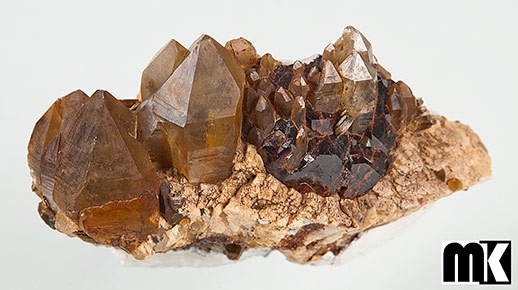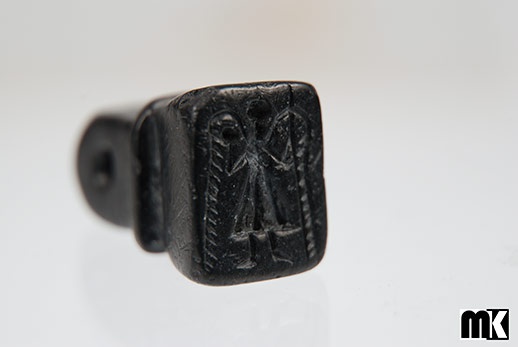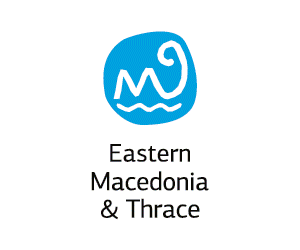Traveler's Guide
East Macedonia & Thrace
Regional Museum of History - Kardzhali

The Regional History Museum in the town of Kardzhali is one of the largest museums in Southern Bulgaria.A municipality-funded project, it was built in the period 1922-1930. It was designed by a Russian architect who worked in Constantinople. Initially, the building was intended for a Muslim religious school, but has never performed this function.
Opened in 1965, its collection contains over 45,000 artifacts that trace back the life of the Eastern Rhodopes from ancient times to the beginning of the 20th century. The exhibition was open to visitors in 1987 and occupies 1800 square meters space on three floors. The building has a courtyard with a water area of 15 acres. Twenty-two plant species, unique for the region of southern Bulgaria, have been planted.
The museum has three sections - Archeology, Ethnology and Nature. Each section occupies a separate floor with rooms devoted to different themes.
The archaeological exhibition is displayed on the first floor. There are 9 rooms with exhibits from the early Neolithic to the High Middle Ages (roughly 5900 BC to 1400 BC.). The first Exhibition Room has objects from the Neolithic era. It presents findings from several sites, including from the early Neolithic settlements in Kardzhali and Krumovgrad (5900-5700 BC). The first object was found in the central part of the city. It was accidentally discovered while digging the foundations of an apartment block. The depth is 5 metres from the ground today.The excavations revealed a variety of residential and commercial buildings. Noteworthy is the fact that archeological excavations facilitated the recovery of one of the earliest "cobblestone streets”. It was paved with smooth river cobbles and rubble.The site that has been explored in Krumovgrad is a mound. The finds from it are different everyday objects of prehistoric people.
The second Exhibition Room is designed to display discoveries of the Stone-Copper Age (4800-4200 BC) and the Bronze Ages (3200 - until around 1100 BC.). They represent a variety of ceramic, metal and stone objects. The main objects here are from the villages of Samovodene, Pchelari and others. The museum has one of the earliest copper objects in Bulgaria and Europe.
In the second Exhibition Room, a part of the mound in Samovodene (the object probably dates back to 4800-4400 BC) is presented and reconstructed. It shows the remains of a building where stone tools were processed. The labour instruments used for the purspose were found alongside some pottery. A part of the defense system of the village is on display as well.
In the third Exhibition Room,a material from the Iron Age (1100 BC - to around 44 AD) is presented along with a part of the numismatic collection of the museum. Among the Greek coins and those of their colonies on the Thracian coast of the Aegean, the visitor can see their imitations (printed by the local tribes).
The next Exhibition Room displays objects from the Roman era in the region. Here are findings from the Armira villa (located near Ivaylovgrad). The villa is known for its lavish decoration. There were found mosaics, sculptures and others. In this room, you can see pieces of its rich decoration (various marble panels adorned with floral motifs). Along with them, in showcases,are displayed various ornaments (of precious metal), containers, tools, etc. found in the Eastern Rhodopes. This room leads to a corridor, which displays a temporary exhibition of artifacts from recent excavations on sites in Kardzhali region (mostly from Perperikon).
In the Middle Ages Exhibition Room, there is jewelry (rings, bracelets, pendants, reliquary, etc.), tools, pottery and more. Different elements of militant and protective weapons such as armor, maces, arrows, etc are exhibited. For greater effect, there is a full-size reconstruction of catapult. Various architectural details and copies of paintings from different sites of the area, such as the monastery "St. John the Baptist" are exhibited.
In the Nature Section, there is a major exhibition of various minerals. Here too, the rooms are organized thematically.
In the third Exhibition Room of this section, there are tracks of different animals sealed in stone. Leaves of trees and remains of ancient animals (various shellfish, corals and even the remains of fish) can be seen. Impressive is the opalized log, preserved after millions of years in the ground (opalization is the process of fossilization of organic matter). The museum has a collection of dried plants.
The third floor is occupied by the museum"s ethnographic exhibition. Main place is given to the typical crafts of this region and tobacco growing, in particular. The whole process is presented - from the stringing and baling to drying the final product. There is also a reconstruction of a dairy farm. The typical for this part of Bulgaria costumes can be seen on this floor. The collection is substantial and presents male and female costumes of Christians and Muslims.
Summer:
day off - Monday
Tuesday - Friday: 09:00 - 17:00
Saturday - Sunday: 09:00 - 17:00
Winter:
days off - Monday and Sunday
Tuesday - Saturday: 09:00 - 17:00
Students and retired – 2,00 lv.
Visitors over 18 – 5,00 lv.
Guide:
Overall – 15,00 лв.
Thematic – 10,00 лв.
Foreign language – 20,00 лв.
Discount for groups over 20 people – 50%
Every last Tuesday of the month - free entry
Children up to 7 and disabled people – free entry
Free entry on 18th of May - the International Museums day
Address
No information available.Contact Information










